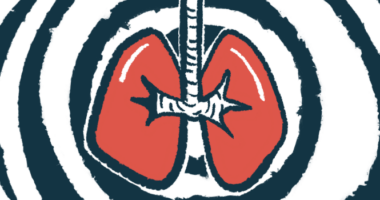#NACFC2017 – SNSP113 Aids Airway Clearance, Fights Pseudomonas Infection, Early Studies Show

Two preclinical studies support the ability of Synspira’s lead candidate SNSP113 to prevent bacteria from forming treatment-resistant layers (biofilms), and in reducing mucus viscosity and easing clearance, new data show.
These findings, presented at the 31st Annual North American Cystic Fibrosis Conference (NACFC) taking place in Indianapolis through Nov. 4, also support the inhaled therapy’s potential to treat patients with cystic fibrosis (CF).
SNSP113 is a polycationic glycopolymer (PAAG) that is being developed as an inhaled treatment to improve lung function in CF patients.
The treatment is designed to interact with some components of the bacterial biofilms and bacteria walls to disrupt their structure and strengthen the efficacy of antibiotics. SNSP113 has also the capacity to interact with some proteins found in mucus breaking them apart.
A team led by Steven M. Rowe, MD, director of the Gregory Fleming James Cystic Fibrosis Research Center at the University of Alabama at Birmingham, showed that SNSP113 could significantly reduce viscosity and aid transport of CF sputum.
In the studies, it induced a change in conformation of mucin proteins. These proteins can be found in the airway cells and are necessary to move mucus through the airways. In CF patients, mucins have abnormal structures that cause them to have low mobility. Upon SNSP113 exposure, mucins showed a linear form, more similar to the structure found in healthy individuals.
Study data were reported in the presentation “PAAG Alters the Viscoelasticity and Transport of CF Mucus,” and suggested that SNSP113 can be used to reduce mucus viscosity and improve lung clearance in patients with CF and other respiratory conditions.
“People living with cystic fibrosis are challenged by abnormal mucus that precipitates chronic infection and dysregulated inflammation,” Rowe said in a press release. “The effects on both mucus and Pseudomonas bacterial infection demonstrated by SNSP113 are very promising for cystic fibrosis patients, no matter their underlying CFTR mutation.”
In a second presentation, “Anti-Pseudomonas Aeruginosa Biofilm Activity of the Novel Glycopolymer PAAG on Infected Cystic Fibrosis Respiratory Epithelium,” researchers showed that SNSP113 also had the potential to reduce established Pseudomonas infections.
Researchers collected and isolated cells from the airways of a CF patient, which they exposed to SNSP113 alone or in combination with the antibiotic tobramycin, which is approved to treat Pseudomonas aeruginosa infection.
SNSP113 did not only reduce the thickness of biofilms, but it also prevented biofilm from growing on CF cells. When combined with the antibiotic, the investigative drug improved the therapeutic effect of tobramycin, promoting bacteria death.
These findings are in accordance with a previous study demonstrating the synergistic effect of SNSP113 and antibiotics to fight Burkholderia cepacia infection.
“The results presented … further elucidate how SNSP113 can improve the treatment of cystic fibrosis by potentially reducing chronic infections that impair lung function while also improving the clearance of mucus and bacteria,” said Shenda Baker, Synspira’s CEO, said in the release.
“We are continuing to evaluate in vivo capabilities of SNSP113 and its safety in a Phase 1a clinical trial [NCT03309358] as part of our clinical program to advance the treatment of cystic fibrosis patients, regardless of genetic mutation,” Baker added.
Synspira is currently recruiting participants for this U.K.-based Phase 1a trial to assess the safety and tolerability of inhaled SNSP113 in healthy volunteers and patients with stable CF. For additional information, please visit the trial’s registry webpage.







